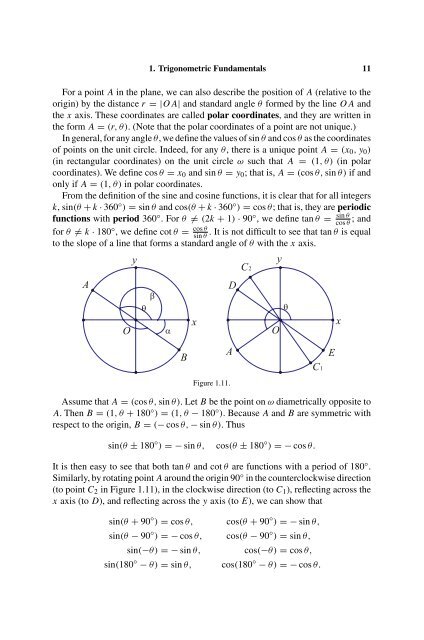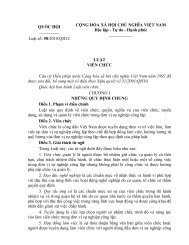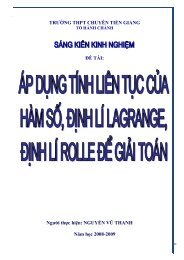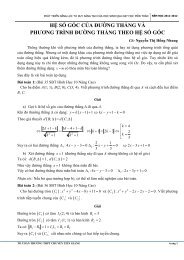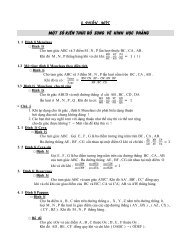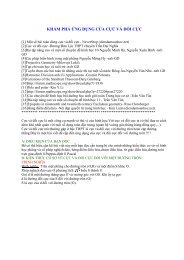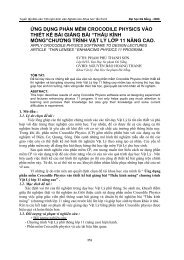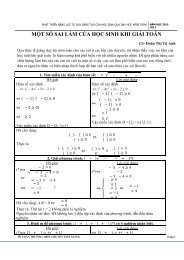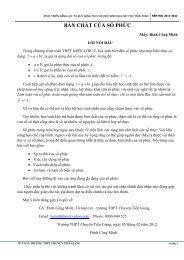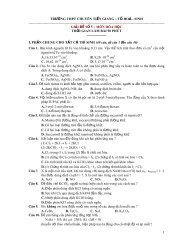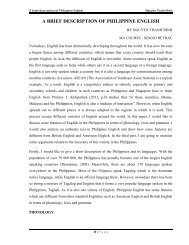103 Trigonometry Problems
103 Trigonometry Problems
103 Trigonometry Problems
Create successful ePaper yourself
Turn your PDF publications into a flip-book with our unique Google optimized e-Paper software.
1. Trigonometric Fundamentals 11<br />
For a point A in the plane, we can also describe the position of A (relative to the<br />
origin) by the distance r =|OA| and standard angle θ formed by the line OA and<br />
the x axis. These coordinates are called polar coordinates, and they are written in<br />
the form A = (r, θ). (Note that the polar coordinates of a point are not unique.)<br />
In general, for any angle θ, we define the values of sin θ and cos θ as the coordinates<br />
of points on the unit circle. Indeed, for any θ, there is a unique point A = (x 0 ,y 0 )<br />
(in rectangular coordinates) on the unit circle ω such that A = (1,θ) (in polar<br />
coordinates). We define cos θ = x 0 and sin θ = y 0 ; that is, A = (cos θ,sin θ) if and<br />
only if A = (1,θ)in polar coordinates.<br />
From the definition of the sine and cosine functions, it is clear that for all integers<br />
k, sin(θ + k · 360 ◦ ) = sin θ and cos(θ + k · 360 ◦ ) = cos θ; that is, they are periodic<br />
functions with period 360 ◦ .Forθ ̸= (2k + 1) · 90 ◦ , we define tan θ =<br />
cos sin θ<br />
θ ; and<br />
for θ ̸= k · 180 ◦ , we define cot θ = cos sin θ θ . It is not difficult to see that tan θ is equal<br />
to the slope of a line that forms a standard angle of θ with the x axis.<br />
A<br />
O<br />
y<br />
<br />
<br />
<br />
x<br />
D<br />
C2<br />
O<br />
y<br />
<br />
x<br />
B<br />
A<br />
C1<br />
E<br />
Figure 1.11.<br />
Assume that A = (cos θ,sin θ). Let B be the point on ω diametrically opposite to<br />
A. Then B = (1,θ + 180 ◦ ) = (1,θ − 180 ◦ ). Because A and B are symmetric with<br />
respect to the origin, B = (− cos θ,− sin θ). Thus<br />
sin(θ ± 180 ◦ ) =−sin θ, cos(θ ± 180 ◦ ) =−cos θ.<br />
It is then easy to see that both tan θ and cot θ are functions with a period of 180 ◦ .<br />
Similarly, by rotating point A around the origin 90 ◦ in the counterclockwise direction<br />
(to point C 2 in Figure 1.11), in the clockwise direction (to C 1 ), reflecting across the<br />
x axis (to D), and reflecting across the y axis (to E), we can show that<br />
sin(θ + 90 ◦ ) = cos θ, cos(θ + 90 ◦ ) =−sin θ,<br />
sin(θ − 90 ◦ ) =−cos θ, cos(θ − 90 ◦ ) = sin θ,<br />
sin(−θ) =−sin θ, cos(−θ) = cos θ,<br />
sin(180 ◦ − θ) = sin θ, cos(180 ◦ − θ) =−cos θ.


